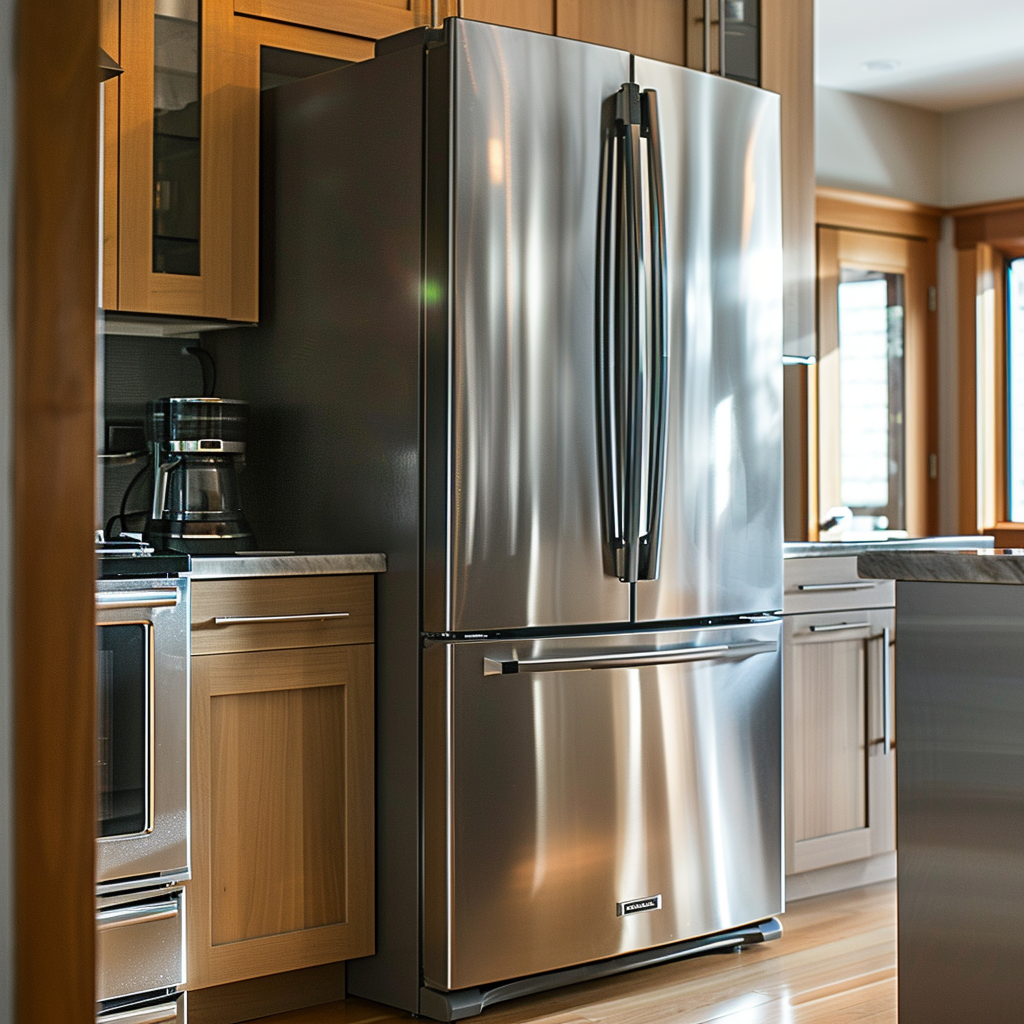The Ultimate Guide to Cleaning Stainless Steel Appliances: Tips and Tricks for a Spotless Shine

Share
The Ultimate Guide to Cleaning Stainless Steel Appliances: Tips and Tricks for a Spotless Shine
Stainless steel appliances are a modern kitchen staple, known for their sleek look and durability. However, keeping them clean and streak-free can be a challenge, especially with all the fingerprints, smudges, and spills they attract. Don’t worry—using the right cleaning techniques and products will help you keep your stainless steel appliances looking brand new. Here’s your comprehensive guide to cleaning and maintaining your stainless steel appliances, from fridges to microwaves.
Why Clean Stainless Steel Appliances?
Clean stainless steel appliances add aesthetic appeal, making your kitchen look polished and inviting. Regular cleaning prevents grime buildup and potential damage, extending the life of your appliances. Plus, clean surfaces contribute to a more hygienic kitchen, reducing bacteria and allergens.
Personal Tip: Frequent light cleaning prevents tough buildup and keeps your appliances looking spotless with less effort.
Common Challenges with Stainless Steel
Stainless steel is notorious for showing every fingerprint, streak, and smudge. In kitchens, appliances also become coated with grime and grease from cooking, which can be difficult to clean without proper methods.
Personal Tip: Using the correct cleaning tools, like microfiber cloths, will make cleaning faster and prevent scratches or streaks.
Effective Cleaning Methods for Stainless Steel
Step 1: Gather Your Supplies You'll need microfiber cloths, white vinegar, olive or mineral oil, dish soap, baking soda, a spray bottle, and soft cloths for buffing and drying.
Personal Tip: Microfiber cloths are crucial for streak-free cleaning, while vinegar and oil help with both cleaning and polishing.
Step 2: Start with a Basic Clean Mix a few drops of dish soap with warm water. Wipe the appliance with a microfiber cloth to remove grime and grease. Rinse the cloth and wipe again to eliminate soap residue.
Personal Tip: Always wipe with the grain of the stainless steel to avoid streaks.
Step 3: Remove Fingerprints and Smudges Spray white vinegar directly onto the surface and wipe with a microfiber cloth, following the grain. Next, apply a small amount of olive oil or mineral oil to a clean cloth and buff the surface. This removes remaining smudges and adds a protective shine.
Personal Tip: Use minimal oil for polishing—too much can leave a greasy residue.
Step 4: Tackle Stubborn Stains For tough stains, mix baking soda with water to form a paste. Apply it to the stain, let it sit for a few minutes, then gently scrub with a soft cloth. Wipe away with a damp cloth and dry the area thoroughly.
Personal Tip: Avoid harsh scrubbing to prevent scratching the surface. Baking soda is abrasive enough to clean without damaging the finish.
Preventative Maintenance
Regularly wiping down your appliances will keep them cleaner longer. Consider using protective covers on handles to reduce smudges. Avoid harsh chemicals and abrasive cleaners that can scratch or dull the surface.
Personal Tip: Make weekly cleaning a habit to keep your appliances in top condition with minimal effort.
Common Mistakes to Avoid
Avoid using abrasive tools like steel wool, which can permanently scratch stainless steel. Always clean with the grain, and be sure to rinse off all cleaning residues to prevent streaks or watermarks.
Personal Tip: If you're in a rush, a quick vinegar wipe-down is a simple and effective solution for streak-free shine.
Detailed Cleaning Techniques for Different Appliances
Refrigerators
Inside: Remove food and shelves, then wipe down with a mixture of baking soda and water to eliminate odors.
Exterior: Use the vinegar and oil method for a sparkling exterior, paying extra attention to handles.
Personal Tip: Clean handles more frequently, as they attract the most fingerprints.
Ovens and Stovetops
Grime Removal: Use a baking soda paste on stubborn grease stains. Let it sit, then gently scrub.
Glass Top: Clean glass stoves with a mixture of vinegar and water, followed by a microfiber cloth.
Personal Tip: For burnt-on food, let baking soda paste sit longer before scrubbing.
Dishwashers
Door: Clean the exterior with vinegar. For the interior, run an empty cycle with a cup of vinegar to eliminate odors.
Filter: Regularly clean the filter for optimal performance.
Personal Tip: Clean the dishwasher door seals to prevent grime buildup and odors.
Microwaves
Interior: Heat a bowl of water with lemon slices for 3-5 minutes. The steam loosens food particles, making it easy to wipe away.
Exterior: Use vinegar on the exterior, paying special attention to buttons and handles.
Personal Tip: Always unplug the microwave before cleaning to avoid any electrical issues.
Additional Tips for Maintaining Stainless Steel
Use distilled water when mixing cleaning solutions to prevent mineral deposits and streaks. Always buff your stainless steel with a soft cloth after cleaning to enhance shine. Establishing a regular cleaning routine ensures your appliances stay looking new.
Personal Tip: Keep a microfiber cloth nearby for quick touch-ups between deep cleanings.
Environmental Benefits of Natural Cleaners
Using natural cleaners like vinegar and baking soda is not only effective but also environmentally friendly. These non-toxic, biodegradable ingredients are safe for your family and the planet, plus they’re budget-friendly.
Personal Tip: A bottle of vinegar and a box of baking soda can replace most commercial cleaners, making your cleaning routine simpler and safer.
Why Regular Cleaning is Essential
Regular cleaning maintains the appearance of your stainless steel appliances, preventing unsightly grime buildup. It also prevents damage from corrosive substances and ensures that your kitchen remains a healthy, hygienic space.
Personal Tip: Regular, light cleaning is faster and more effective than waiting for grime to build up, keeping your appliances looking new longer.


